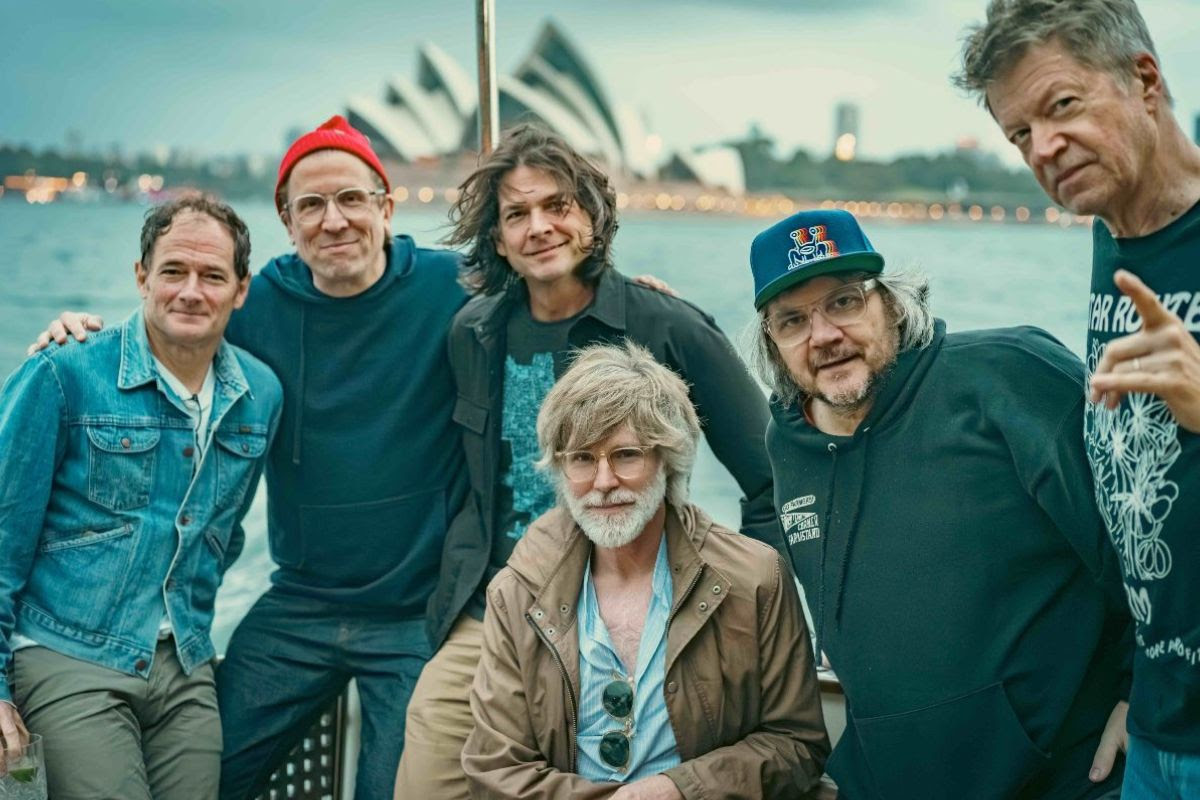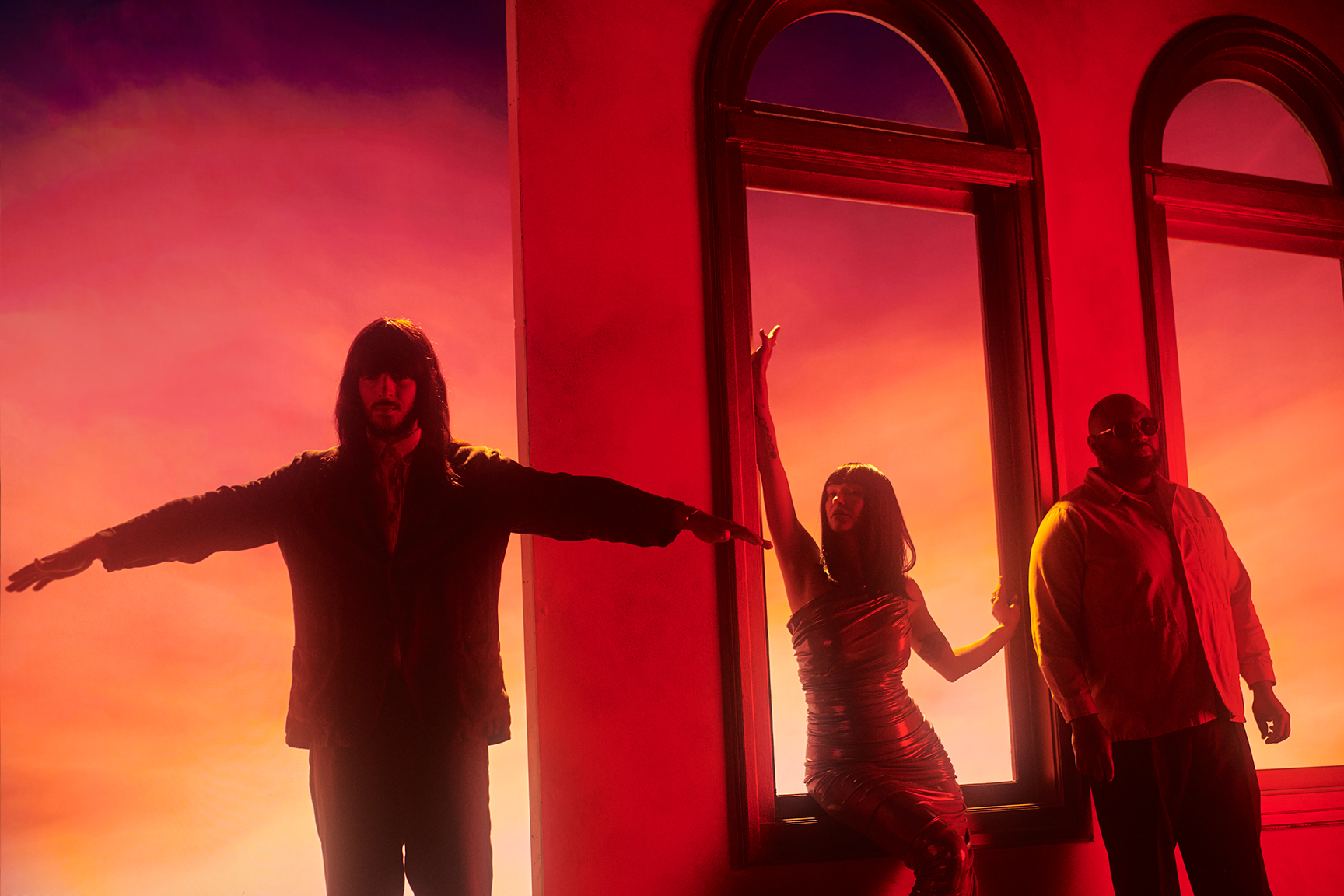When working from home, these are the records JME contributors like to spin
In the year of the pandemic, working remotely went from a perk limited to those employed by forward-thinking companies to simply the way in which we all work. But judging by the sheer volume of ink spilled on think-pieces related to this paradigm shift, working from home doesn’t exactly work for everyone.
For our JME contributors, many of whom stack a broad assortment of freelance writing, gigging or impresorio-type endeavors up to earn a living wage, home has long been the office de rigueur––perks include: diner-quality coffee, casual dress code, little in the way of office politics and, best of all, playlists curated by a cadre of one.
In short: We got this thing down. And we’re here to help.
Our homebound team dug through their vinyl collections to share an album that makes the remote work grind feel more like Eden and less like banishment-from-Eden.
Nomad, Bombino (2013)

Dubbed “Sultan of the Shred,” Omar “Bambino” Moctar is a Nigerian singer-songwriter and guitarist with dexterity enough to stoke out a western audience on the nuance of odd and compound meter. He was, dare I say, “discovered” in the Western hemisphere by Hisham Mayet, founder of Seattle’s Sublime Frequencies, a loose affiliation of explorers who document and share sounds from around the world. Academic in nature, Sublime Frequencies aims to use music as a means of conversation––a way to tell stories, both tragic and triumphant from different corners of the world. They managed to find Bombino leading an electric wedding band, and made several recordings released in 2009 as Group Bombino, Guitars from Agadez Vol. 2. Bombino, a member of the Ifoghas Tribe of the nomadic Taureg People, was forced into hiding shortly after the recordings of these tapes. In the face of the 2007 Taureg Rebellion, the government began executing musicians and banning the guitar in an effort aimed at erasure. Bombino fled and lived in exile, claiming his guitar as a means of unification and non-violence. During his exile, another Western filmmaker came to document his story.
Those recordings turned into his first Album, Agadez, which topped iTunes’s World Chart. His first North American tour was put together as an exhibit of Tuareg art by Stanford’s Cantor Center for Visual Arts, during which Bombino shared the stage with members of The Rolling Stones, a band Bombino famously claimed to have never heard of. At this point of the story, Dan Auerbach, of The Black Keys, caught wind of Bombino and produced Nomad to much acclaim in indie circles. In this writer’s opinion, the packaging could have used more information and a spotlight on the incredible story of Omar Moctar, but it’s a small complaint on a really great record.
Glenn Van Dyke, JME Contributor
Feeling Hands, The Mattson 2 (2011)

When I’m working, I tend to find music with lyrics distracting. Likely because, when I’m trying to be productive, I’m actually trying to produce words myself. So, when grinding, I lean into instrumental stuff; Chet Atkins Guitar Country is a go-to. Traditional Hawaiian. Brian Eno’s Ambient Music for Airports. Coltrane’s Giant Steps (I’m too square for the more dissonant or experimental fare). When I’m spinning yarns, contemporary surf-jazz duo Mattson 2’s 2011 debut LP Feeling Hands gets the most spins.
The San Diego, CA twins (Jared-guitar and bass loops; Jonathan-drums) make expressive, tight-but-loose instrumental compositions that sound something like if Buddy Rich were to hang at Malibu’s First Point all day, then moonlight behind Charlie Christain, who, in this scenario, had been bequeathed a reverb pedal.
Matthew Shaw, JME Contributor
Finger-Lickin’ Good, Lonnie Smith (1967)

Released a few years before his classic soul-jazz dates for Blue Note, Lonnie Smiths’ debut album Finger-Lickin’ Good presents a deep funky groove way ahead of its time; even for 1966. This album embraces the influence of more commercial musical pursuits, something few jazz musicians were doing at that time.
Finger-Lickin’ Good is perfect for those late-night turntable sessions that accompany those late-night work projects. It’s funky enough to keep you going. But be wary, as you’re likely to just decide to trade your keyboard and mouse for headphones, immersing yourself in Smith’s singular B3 organ grooves. Whether crate digging virtually or at your favorite local record store, this one is highly recommended. Be prepared to stay up late and just keep flipping the vinyl over.
David Luckin, JME Contributor
Hard and Heavy, Sam Samudio (1971)

When I like to shut out the known world and work––a process equaling resistance, expertise and negotiating with the inner-demon cymbal hoedown––I shut it down hard. I need music that goes to the Ur-grunt of the matter: void of irony or Yamaha DX7 vanilla-synth-frosting. Music heavy on kick-drum thwap. Performances that make you weirdly damp just reading the damn liner notes. A mere five years after releasing 1965’s Tex-Mex garage stomp-classic “Woolly Bully,” Sam the Sham aka Domingo Samudio aka Sam Samudio headed to Criteria Sound Studios in Miami. Along with producer Tom Dowd, the pair assembled the holy guardian angels of ‘60s soul and R&B—the Dixie Flyers, Memphis Horns, and Sweet Inspirations—and cut the 10-track Hard and Heavy.
The sessions feature stabbing slide by Duane Allman on Samudio’s “Relativity” and a felony-boogie through John Lee Hooker’s menacing “Goin’ Upstairs.” Samudio and co. also tackle Samudio originals and covers by Randy Newman, Doc Pomus, and Otis Rush with equal aplomb. Hard and Heavy was considered a kind of career-shift for Samudio, which in hindsight is laughable when you realize that the then-Methuselah was a staggering 33-years old when he cut the album. Like his Texas soul brother Doug Sahm, also no stranger to pulling rock-and-blues metaphors out onto the honky tonk floor, Sam Samudio is a true blue, ladened by obscurity yet with enough genius fire spirit to seem indifferent to accolades, record sales, or even these kinds of gushy appreciations.
Daniel A. Brown, JME Contributor
Mochilla Presents Timeless: Suite For Ma Dukes, Miguel Atwood-Ferguson (2010)

I’ve been getting much better at listening to music while listening to people talk (audio engineer for a podcast company, here). I started incorporating jazz into my work day, and it’s been a boon to my productivity. As a hip-hop obsessive––someone who understands the marriage between jazz, 808s, and spoken word––Mochilla Presents Timeless: Suite For Ma Dukes was on my radar.
It’s quickly become my work day go-to. On Mochilla Presents Timeless: Suite For Ma Dukes, a 60-piece orchestra performs cuts from the prolific catalog of late-hip-hop pioneer J. Dilla––i.e. your favorite producer’s favorite producer. This one makes for a great day of work; and play.
Al Pete, JME Contributor

Mr. Al Pete and Notsucal Release Their Latest Collab, ‘G4.5’

Dinner Party, Tom Misch and More from the Neighborhood with Mr. Al Pete

An Ultra-Chill Playlist from the Latest Episode of Electro Lounge

Sing Out Loud Festival Returns With Hozier, Beabadoobee, Father John Misty, Vance Joy and More

Chicago Alt-Country Faves Wilco Return to St. Augustine with Indie-Folk Great Waxahatchee

Looking for an Alternative to Spotify? Consider Hopping on the band(camp) Wagon

Khruangbin to Bring ‘A LA SALA’ Tour to St. Augustine in April

Perfume Genius, Flipturn, Tamino + Mitski and 6 New Songs to Stream

Song of the Day | “all tied up” by Glixen




